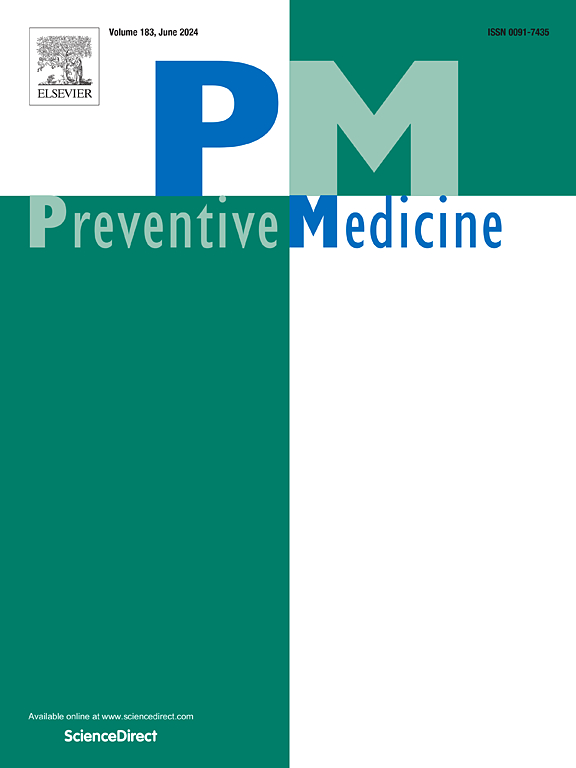糖尿病管理的持续性别差异(1997-2022):25 瑞士健康调查的全国证据。
IF 3.2
2区 医学
Q1 MEDICINE, GENERAL & INTERNAL
引用次数: 0
摘要
目的:利用具有全国代表性的数据,评估瑞士25年来糖尿病管理的性别特异性趋势,并确定绝经状态是否会改变这些差异。方法:我们分析了6项瑞士健康调查(1997-2022),以评估糖尿病筛查、诊断、治疗和控制方面的性别差异。根据人口统计学、社会经济和生活方式协变量调整多变量logistic回归。年龄分层分析探讨了特定生命阶段的模式,使用年龄 > 50作为更年期状态的代表。结果:共纳入80,133名参与者(54.5 %为女性)。在多变量调整后,在所有调查年份中,女性显示出近期糖尿病筛查的可能性高于男性(例如,2022年的OR为1.20,95 % CI为1.12-1.28),没有证据表明随着时间的推移而缩小。相反,女性被诊断为糖尿病的可能性(例如,2022年,OR为0.71,95 % CI为0.63-0.81)和诊断后接受治疗的可能性(例如,2022年,OR为0.56,95 % CI为0.40-0.80)一直较低,没有时间上的改善。治疗组在糖尿病控制方面没有明显的性别差异。年龄分层分析显示,性别差异因年龄而异,潜在地反映了与生活阶段相关的因素可能导致观察到的差异。结论:这项研究强调了瑞士20多年来糖尿病管理中持续的、年龄调节的性别差异。虽然一旦开始治疗,两性之间的糖尿病控制是相似的,但筛查、诊断和治疗方面的不平等仍然存在。本文章由计算机程序翻译,如有差异,请以英文原文为准。
Persistent sex differences in diabetes management (1997–2022): 25 years of national evidence from the Swiss Health Survey
Objective
To evaluate sex-specific trends in diabetes management in Switzerland over a 25-year period using nationally representative data, and to determine whether menopausal status modifies these differences.
Methods
We analyzed six Swiss Health Surveys (1997–2022) to assess sex differences in diabetes screening, diagnosis, treatment, and control. Multivariable logistic regressions were adjusted for demographic, socioeconomic, and lifestyle covariates. Age-stratified analyses explored life-stage-specific patterns, using age > 50 as a proxy for menopausal status.
Results
A total of 80,133 participants (54.5 % female) were included. After multivariable adjustment, females showed a higher likelihood of recent diabetes screening than males across all survey years (e.g., OR 1.20, 95 % CI 1.12–1.28 in 2022), with no evidence of narrowing over time. Conversely, females had a consistently lower likelihood of being diagnosed with diabetes (e.g., OR 0.71, 95 % CI 0.63–0.81 in 2022) and of being treated once diagnosed (e.g., OR 0.56, 95 % CI 0.40–0.80 in 2022), with no temporal improvement. No significant sex differences in diabetes control were observed among those treated. Age-stratified analyses revealed that sex disparities varied by age, potentially reflecting that life-stage-related factors may contribute to the observed disparities.
Conclusions
This study highlights persistent, age-modulated sex differences in diabetes management over two decades in Switzerland. While diabetes control was similar between sexes once treatment was initiated, inequities in screening, diagnosis, and treatment remain.
求助全文
通过发布文献求助,成功后即可免费获取论文全文。
去求助
来源期刊

Preventive medicine
医学-公共卫生、环境卫生与职业卫生
CiteScore
7.70
自引率
3.90%
发文量
0
审稿时长
42 days
期刊介绍:
Founded in 1972 by Ernst Wynder, Preventive Medicine is an international scholarly journal that provides prompt publication of original articles on the science and practice of disease prevention, health promotion, and public health policymaking. Preventive Medicine aims to reward innovation. It will favor insightful observational studies, thoughtful explorations of health data, unsuspected new angles for existing hypotheses, robust randomized controlled trials, and impartial systematic reviews. Preventive Medicine''s ultimate goal is to publish research that will have an impact on the work of practitioners of disease prevention and health promotion, as well as of related disciplines.
 求助内容:
求助内容: 应助结果提醒方式:
应助结果提醒方式:


